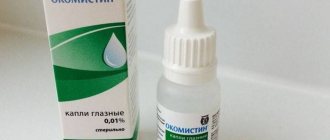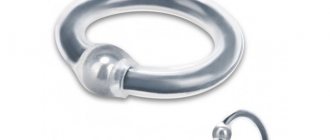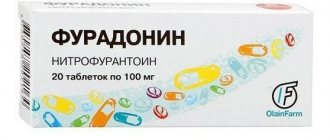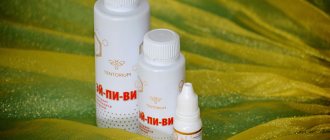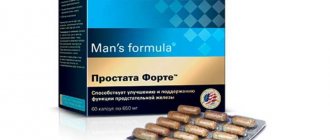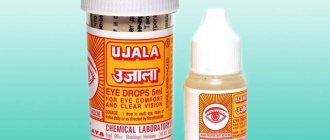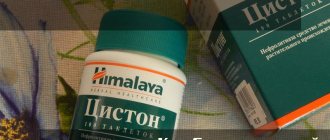pharmachologic effect
Manufacturer: KRKA-RUS, Slovenia or Russia
Release form: tablets
Active ingredient: norfloxacin
The drug has antimicrobial properties and affects most gram-negative and a number of gram-positive bacteria. More precisely about the activity and resistance to the antibiotic is indicated in the instructions for use for Nolitsin.
Is Nolitsin an Antibiotic or Not?
The drug belongs to the antibacterial agents from the group of fluoroquinolones. Has an antimicrobial effect.
Similar means
The drug has many analogues and substitutes, domestic and foreign. Some analogues differ from Nolitsin in composition, while others differ only in excipients, price and release form. Analogs of the drug are available in tablets and soluble granules.
Domestic substitutes
Russian pharmaceutical companies produce analogues of Nolitsin with the same active ingredient. These are tablets with the same dosage of 400 mg. But their name coincides with the active substance Norfloxacin.
The price depends on the manufacturer and the number of tablets in the package. And it ranges from 30 to 140 rubles for 10 tablets. This drug is not just an analogue of Nolitsin, it is a complete substitute, differing from it only in excipients.
Foreign synonyms
There are more foreign analogues. There are drugs that are cheaper, and there are others that are more expensive than this. Here are some analogues with their average price in pharmacies:
- Loxon-400 about 60 rubles;
- Norbactin on average 140 rubles;
- Norax about 190 rubles;
- Youtibid 268 rubles
- Foreign-made Norfoxacin costs about 200 rubles.
All these drugs have a similar composition and release form (in tablets). Their main component is norfoxacin.
For this reason, these medications also have similar side effects. Medicines vary in price.
There are also analogues that differ in composition, but are similar in action. Their prices also vary:
- Ciproloxacin on average 20 rubles;
- Tsiprolet costs about 60 rubles in the smallest packaging and minimum dosage;
- Furamag, depending on the dosage of the active substance, 450 or 710 rubles;
- Monural 40 rubles from an Italian company or 480 rubles (The cost depends on the dose of the active component);
- Monural made in Switzerland costs much more - 820 rubles.
The composition of these drugs is also sometimes radically different. For example, Furamag. It contains potassium furazidin as the main component.
Monural belongs to the antibacterial drugs of the sulfonamide group, and the main active ingredient is fosfomycin. This medication is produced in granules, from which a solution is prepared, taken once a day.
Ciproloxacin, from the group of fluoroquinolones, is the cheapest analogue, but it has more side effects.
The doctor must answer the question of which medication is better. Under no circumstances should you thoughtlessly replace this or that medicine prescribed by a doctor with an analogue.
Nolitsin's analogs
Nolitsin is a first-line treatment for cystitis, urethritis and other infectious and inflammatory diseases of the kidneys and urinary tract. It has proven effectiveness in clinical studies and is classified as an antibiotic.
Nolicin analogs differ in their spectrum of antimicrobial action, the presence of additional properties, indications, manufacturer and price. Most substitutes are available by prescription.
List of Nolitsin analogues
| Analogue | Price, in rubles | Manufacturer |
| Nolitsin | 210-470 | Slovenia or Russia |
| Norbactin | 160-490 | India |
| Norfloxacin | 100-250 | Russia |
| Ofloxacin | 40-230 | Russia, Hungary |
| Nitroxoline | 70-230 | Russia |
| Furadonin | 60-240 | Russia, Latvia |
| Monural | 360-970 | Switzerland |
Analogues and substitutes of Nolitsin with antibacterial (antimicrobial) properties:
- Ofloxacin;
- Ciprofloxacin (Tsiprolet, Tsifran);
- Palin;
- Tavanic (Levofloxacin);
- Amoxiclav;
- Suprax;
- Furamag and Furagin.
Before using them, it is advisable to donate urine for bacterial culture, determine the pathogen and sensitivity to the drugs. All these analogues are used in urology when the drug is ineffective or unavailable.
The drug Furazolidone is used for dysentery, food poisoning, giardiasis and paratyphoid fever. Belongs to a group of drugs that have antiprotozoal and antimicrobial effects. Medicine based on norfloxacin is not prescribed in these cases or is rarely used, therefore Furazolidone is not an analogue of Nolitsin.
Pharmacies also offer over-the-counter analogues of Nolicin made from plant extracts and having several properties. They are more often used and prescribed as an addition to norfloxacin:
- Canephron is a solution and dragee with antimicrobial, anti-inflammatory, diuretic effects;
- Phytolysin is a paste with similar properties, also used for kidney stones.
Both medications - Canephron and Phytolysin - are allowed during pregnancy.
Reviews from doctors
Doctors generally respond positively to analogues. They note their effectiveness, but point out that you need to pay attention to the list of side effects of cheap drugs.
This medicine is especially effective for pathologies of the urinary organs: cystitis, urethritis, etc. Analogues also have a good effect on diseases, since the active substance is the same.
Alexander R., urologist. St. Petersburg.
In my practice, I use Nolitsin in the treatment of bladder diseases, infectious pathologies of a urological nature, if it is necessary to prescribe an antibiotic. I noticed that this medicine gives fewer allergic reactions and is more effective. Before using cheaper analogues, read the contraindications and side effects. Valentina F., Rostov.
Nolitsin or Monural - which is better for cystitis
Manufacturer: Zambon Switzerland, Switzerland
Release form: powder
Active ingredient: fosfomycin
Synonyms: Ecomural, Uronormin, Phosphoral, Fosfomycin
In consultation with your doctor, for diseases of the kidneys and urinary tract, Nolitsin can be replaced with Monural. The analogue is a powder that is dissolved immediately before use in water.
Advantages of Monural:
- Possibility of use in children from 5 years of age and pregnant women;
- the course of treatment is only 1 day, however, in severe forms of the disease, the drug can be re-administered after 24 hours;
- imported production.
The disadvantage of this analogue of Nolicin 400 mg is the cost.
Both medicines are high quality and have proven effectiveness. The choice in favor of one of the analogues is made by the doctor based on the patient’s medical history, characteristics and financial capabilities.
Furadonin or Nolitsin - which is better for cystitis
Manufacturer: Irbit Chemical Pharmaceutical Plant, Russia, or Olainfarm, Latvia
Release form: tablets
Active ingredient: nitrofurantoin
Furadonin is an analogue of Nolicin for cystitis from the same pharmacological group (nitrofurans). Which is better depends on the causative agent of the disease and its sensitivity to the active substance.
Differences between drugs:
- a medicine based on norfloxacin is an imported product (currently packaged in Russia to reduce the cost of processes), Furadonin is mainly domestic;
- an analogue of Nolitsin in tablets is allowed in pediatric practice from 3 years, Nolitsin - from 15 years;
- frequency of administration - Nolitsin is used twice a day, Furadonin 1-3 tablets, depending on the dosage, 3-4 times a day.
The choice between medications is made by the doctor. Both analogues are available by prescription.
Important! Furadonin is a well-known, relatively cheap drug for cystitis. Frequent use unnecessarily, for self-medication, leads to insensitivity of pathogens to this active component. Subsequently - ineffectiveness of treatment, difficulties in selecting medications and complications.
Nolicin®
Crystalluria
In case of prolonged treatment, urine analysis should be monitored for crystalluria. Crystalluria is not expected to occur if the 400 mg twice daily dosage regimen is followed, so as a precaution the recommended daily dose should not be exceeded and sufficient fluid intake should be taken to ensure adequate fluid replacement and adequate diuresis (monitored diuresis).
Renal dysfunction
In patients with severe renal impairment, the risk/benefit ratio when using norfloxacin tablets should be carefully assessed on a case-by-case basis. Kidney function declines with age, particularly in older patients. In case of severe renal impairment, the concentration of norfloxacin in the urine may decrease, since norfloxacin is excreted primarily by the kidneys.
During therapy, the prothrombin index may increase (during surgery, the state of the blood coagulation system should be monitored).
Photosensitivity reaction
When taking norfloxacin, a photosensitivity reaction may occur, so patients should avoid contact with direct sunlight and artificial ultraviolet (UV) radiation. If symptoms of photosensitivity occur (for example, skin changes reminiscent of sunburn), norfloxacin therapy should be discontinued and medical attention should be sought.
Tendinitis and tendon rupture
Norfloxacin, like other fluoroquinolones, can cause tendinitis and tendon rupture, especially in the presence of the following risk factors: age over 60 years, use of glucocorticosteroids, kidney, heart or lung transplantation, increased physical activity, chronic renal failure, history of tendon damage. These phenomena may occur several months after stopping the drug. At the first sign of tendonitis or tendon rupture, you should stop taking norfloxacin and consult a doctor. During therapy with norfloxacin, it is recommended to avoid excessive physical activity. Norfloxacin is contraindicated in patients with tendonitis and/or tendon rupture associated with the use of fluoroquinolones (including a history).
Aneurysm and aortic dissection
Epidemiological studies have reported an increased risk of aortic aneurysm and aortic dissection following the use of fluoroquinolones, especially in elderly patients.
Therefore, in patients with a history of aortic aneurysm, aortic aneurysm and/or aortic dissection, or other risk factors or conditions predisposing to the development of an aortic aneurysm or aortic dissection (eg, Marfan syndrome, vascular type Ehlers-Danlos syndrome, Takayasu's arteritis, giant cell arteritis, Behçet's disease, hypertension, atherosclerosis), fluoroquinolones should be used only after a careful benefit-risk assessment and consideration of alternative treatment options.
If sudden pain in the abdomen, chest, or back occurs, patients should seek medical attention immediately at the emergency room.
QT
prolongation Caution should be used when using fluoroquinolones, including norfloxacin, in patients with established risk factors for QT prolongation, such as:
- congenital long QT interval syndrome or acquired QT interval prolongation;
- simultaneous use of drugs that prolong the QT interval (for example, cisapride, class IA and III antiarrhythmic drugs, tricyclic and tetracyclic antidepressants, macrolides, antipsychotics, antifungals, imidazole derivatives, some antihistamines, including astemizole, terfenadine, ebastine);
- electrolyte imbalance (for example, with hypokalemia, hypomagnesemia);
- with heart disease (for example, heart failure, myocardial infarction, bradycardia).
Elderly patients and women have increased sensitivity to the effects of drugs that cause prolongation of the corrected QT interval (QTc). Therefore, caution should be exercised when using fluoroquinolones, including norfloxacin, in these groups of patients (see sections "Side effects", "Overdose" and "Interaction with other drugs").
If visual impairment or any other change in the organ of vision occurs, you should immediately contact an ophthalmologist.
Convulsive syndrome
Norfloxacin, like other fluoroquinolones, can provoke seizures and lower the seizure threshold. For patients with epilepsy and other diseases of the central nervous system (for example, a predisposition to convulsive reactions, cerebral atherosclerosis, cerebrovascular accidents, organic diseases of the central nervous system), norfloxacin should be used only in cases where the expected clinical effect outweighs the possible risk of developing side effects of the drug. Norfloxacin should be used with caution in patients concomitantly receiving drugs that lower the seizure threshold of the brain (theophylline, fenbufen [and other similar NSAIDs]). If seizures occur, use of norfloxacin should be discontinued. Fluoroquinolones can also stimulate the central nervous system, causing tremors, toxic psychoses, anxiety, confusion and hallucinations, and increased intracranial pressure.
In patients with established or suspected mental disorders, hallucinations and/or confusion, the use of norfloxacin may lead to their exacerbation and intensification.
Psychotic reactions
Psychotic adverse reactions, including suicidal thoughts/attempts, may occur in patients taking fluoroquinolones, including norfloxacin, sometimes after a single dose. In case of development of any side effects from the central nervous system, including mental disorders, treatment with norfloxacin should be stopped immediately and appropriate therapy should be prescribed. In these cases, it is recommended to switch to therapy with an antibiotic other than a fluoroquinolone, if possible.
Nolicin® should be prescribed with caution to patients with psychosis or patients with a history of mental illness (see section "With caution").
Norfloxacin is ineffective against syphilis.
Pseudomembranous colitis
The use of norfloxacin can lead to the development of pseudomembranous colitis caused by Clostridium
difficile .
In this case, it is necessary to discontinue the drug and prescribe appropriate treatment (oral vancomycin or metronidazole). The use of drugs that inhibit intestinal motility is contraindicated.
Neuropathy
In patients taking fluoroquinolones, including norfloxacin, cases of sensory and sensorimotor axonal polyneuropathy affecting small and/or large axons and leading to paresthesia, hypoesthesia, dysesthesia and weakness have been reported. Symptoms may appear soon after starting use and may be irreversible. If the patient develops symptoms of neuropathy, including pain, burning, tingling, numbness and/or weakness or other sensory disturbances, including tactile, pain, temperature, vibration and positional sense, norfloxacin should be discontinued.
Liver dysfunction
Cases of cholestatic hepatitis have been reported with the use of norfloxacin. The patient should be informed that if symptoms of liver dysfunction occur (anorexia, jaundice, dark urine, itching, abdominal pain), consult a doctor before continuing treatment with norfloxacin.
Myasthenia gravis
In patients receiving norfloxacin, the development of myasthenia gravis or its exacerbation was noted. Because this can lead to potentially life-threatening respiratory failure, patients with myasthenia gravis should be advised to seek immediate medical attention if symptoms worsen.
Hypersensitivity and allergic reactions
In some cases, after the first use of the drug, hypersensitivity reactions and allergic reactions may develop, which should be reported to your doctor immediately. Very rarely, even after the first use of the drug, anaphylactic reactions can progress to life-threatening anaphylactic shock. In this case, treatment with norfloxacin should be discontinued and the necessary therapeutic measures (including anti-shock) should be taken.
In rare cases, hemolytic reactions have been reported in patients with latent or actual glucose-6-phosphate dehydrogenase deficiency taking quinolone antibacterial agents, including norfloxacin.
Hypoglycemia and hyperglycemia (dysglycemia)
As with the use of other quinolones, cases of hyperglycemia and hypoglycemia have been observed with the use of norfloxacin. During therapy with norfloxacin, dysglycemia may occur more frequently in elderly patients and patients with diabetes mellitus receiving concomitant therapy with oral hypoglycemic drugs or insulin. When using norfloxacin in such patients, the risk of developing hypoglycemia, including hypoglycemic coma, increases. It is necessary to inform patients about the symptoms of hypoglycemia (confusion, dizziness, ravenous appetite, headache, nervousness, palpitations or increased heart rate, pale skin, perspiration, trembling, weakness). If the patient develops hypoglycemia, treatment with norfloxacin should be stopped immediately and appropriate therapy should be initiated. In these cases, it is recommended to switch to therapy with an antibiotic other than a fluoroquinolone, if possible. When treating with norfloxacin in elderly patients and patients with diabetes mellitus, careful monitoring of blood glucose concentrations is recommended.
Special information on excipients
If you have an allergic reaction to acetylsalicylic acid, azo dye (E110) (sunset yellow dye (E110)) may cause a hypersensitivity reaction.
Nolitsin or Nitroxoline - which is better for cystitis
Manufacturer: Avexima, Uralbiopharm, Biosintez, etc., Russia
Release form: tablets
Active ingredient: nitroxoline
Synonyms: 5-NOK
Nitroxoline is a cheap Russian analogue of Nolitsin, which has antimicrobial properties. Has features:
- 1-2 tablets are taken by children and 2 tablets by adults, while Nolicin is used 1-2 tablets from the age of 15;
- The frequency of administration varies - the analogue is used more often, up to 4 times a day;
- the course of treatment with a cheap analogue of Nolitsin is longer and lasts 2–3 weeks;
- due to the availability and popularity of Nitroxoline, many bacteria, pathogens of cystitis and urethritis are resistant to it.
Nolitsin is a more effective and modern drug. However, for children from 3 years of age, doctors use the cheap analogue Nitroxoline. What to choose is decided by a specialist based on indications and culture data.
Nolicin or Norbactin
Manufacturer: Sun Pharmaceutical Industries, India
Release form: tablets
Active ingredient: norfloxacin
Norbactin and Nolicin are substitutes with the same composition and properties. The drugs differ by manufacturer (the first is India, the second is Slovenia and the packaging is Russia). Available in 10 and 20 tablets, the cost is approximately the same - from 160 to 490 rubles, depending on packaging.
Analogues are prescribed for cystitis, urethritis, infections of the genital tract, gastrointestinal tract, etc., provoked by microorganisms sensitive to drugs. The only difference is that Nolitsin is allowed from the age of 15, Norbactin should not be taken by minors.
A doctor can advise you on how to replace Nolitsin based on the indications, the causative agent, and the effectiveness of previous treatment. If this drug is prescribed and is not available in the pharmacy, you can independently replace it with synonyms (Norfloxacin, Norbactin). All antibacterial medications are available with a prescription.
Indications and contraindications for use
Nolitsin is prescribed for the treatment of infectious-type inflammatory processes in the abdominal organs when the causative microorganism is sensitive to it.
Among the diseases of the excretory system that are treated with Nolitsin:
- cystitis;
- urethritis;
- pyelonephritis.
It is also used in the treatment of diseases of the reproductive system, as well as acute intestinal pathologies of an infectious type.
Nolicin is used to prevent exacerbations
- urinary tract infections;
- diarrhea;
- sepsis.
Contraindications for use are:
- allergy to any component;
- congenital deficiency of glucose-6-phosphate dehydrogenase;
- carrying a pregnancy in all trimesters, feeding;
- age less than 18 years.
The drug should be used with caution in case of epilepsy, cerebral atherosclerosis, liver or kidney failure, and allergy to Aspirin.
Nolicin has many analogues that can replace the drug in cases where for some reason it is not possible to take it.
Answers on questions
- Nolicin - diuretic or not?
No, it is an antimicrobial drug used primarily in urology to treat infectious and inflammatory diseases of the kidneys and urinary tract.
- Is Nolicin compatible with alcohol or not?
This is an antibacterial drug that is incompatible with alcohol. Concomitant use may provoke or increase side effects on the liver.
- Is Nolicin available by prescription or not?
Yes, the drug is a prescription drug. Selling it from pharmacies without a prescription is a violation of the law.

